Revision Notes: The Union Legislature | History and Civics Class 10 ICSE PDF Download
| Table of contents |

|
| The Union Parliament |

|
| Federal Government |

|
| Lok Sabha |

|
| Rajya Sabha |

|
| Anti-Defection Law |

|
The Union Parliament
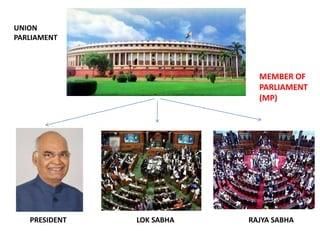
- The Union Parliament is made up of the President and two houses: The House of People (Lok Sabha) and The Council of States (Rajya Sabha).
- The Parliament is a group of representatives chosen by the people, and it holds the highest power and authority to govern in a democratic country.
Federal Government
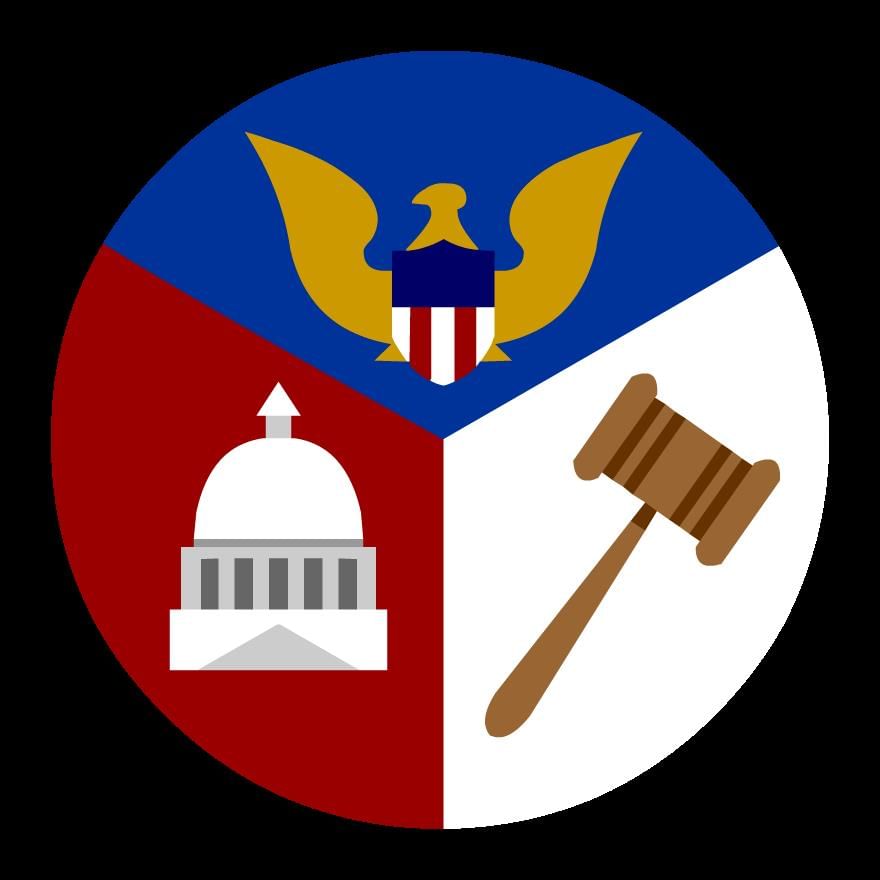
India has a federal system of government, which means that powers are shared between the central government and state governments. Both levels of government are supreme within their own areas of authority. The Constitution of India grants authority to both the central and state governments.
Importance of the Federal Form of Government
- Despite having a federal system, states cannot secede from the Indian Union, ensuring the country's unity and integrity.
- The federal setup accommodates the diverse religious, cultural, and linguistic groups in India, allowing them to maintain their cultural and linguistic identities.
- Both the Union and state governments derive their powers and authority from the Constitution. There is a clear division of administrative and legislative powers between them, and neither can violate the Constitution.
- States also play a role in the functioning of the government, with the Rajya Sabha (Upper House) primarily consisting of representatives from the states.
- The Constitution ensures that both central and state governments have sufficient financial resources to fulfill their responsibilities towards the people.
Unitary Features (Non-Federal)
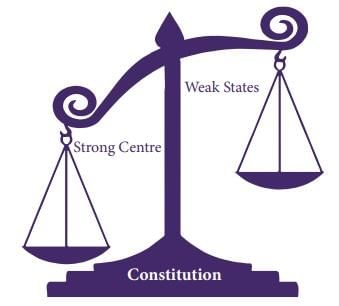
While India is constitutionally federal, it also exhibits unitary features that strengthen the central government's authority. This is why India is described as federal in form but unitary in spirit. Here are some key unitary features of the Constitution:
- Distribution of Powers: There are three lists that outline the subjects on which the government can make laws:
- Union List: Contains 97 subjects on which only the central government can legislate, such as defence and finance.
- State List: Comprises 67 subjects on which only state governments can make laws, such as education and health.
- Concurrent List: Includes 47 subjects on which both central and state governments can legislate, such as criminal laws and laws on adulteration. If there is a conflict between central and state laws on a concurrent subject, the central law prevails, further enhancing the central government's power.
- Single Constitution: There is only one Constitution for the entire country, from which both the central and state governments derive their powers and authority.
- Single Citizenship: The Constitution provides for single citizenship for all Indians, regardless of the state in which they reside.
- Rajya Sabha Representation: States do not have equal representation in the Rajya Sabha (Council of States); instead, representation is based on the population of each state.
- Union Territories: The existence of Union Territories, which are directly administered by the central government, further amplifies central authority.
Lok Sabha
The Lok Sabha, also known as the House of People, is a crucial part of India's parliamentary system. Its members are directly elected by the people of India, making it a key institution in representing the democratic will of the citizens.
Term of the Lok Sabha
- Duration : Members of the Lok Sabha are elected for a term of five years.
- Early Dissolution : The Lok Sabha can be dissolved before the end of its term by the President, based on the advice of the Prime Minister and the Cabinet.
- Extension During Emergency : The term can be extended by one year during a national emergency.
Composition of the Lok Sabha
Maximum Strength : The Lok Sabha can have a maximum of 552 members. Representation : States : Up to 530 members can represent the states. Union Territories : Up to 20 members can represent the union territories. Presidential Appointment : The President can appoint two members from the Anglo-Indian community. Seat Allocation : Seats are allocated to states based on their population. For instance, Uttar Pradesh, being the most populous state, sends 80 members to the Lok Sabha, while smaller states like Sikkim and Goa send one and two members, respectively.
Qualification for Membership in Parliament
- Citizenship and Age: The candidate must be a citizen of India and at least 25 years old.
- Electoral Rolls: The candidate's name should be listed in the electoral rolls in some parts of the country.
- Financial Stability: The candidate should not be in debt and must be able to meet their financial obligations.
- Office of Profit: The candidate should not hold any office of profit under the government.
- Criminal Record and Mental Capacity: The candidate should not be a proclaimed criminal and must be of sound mind.
Disqualification of Membership in Parliament
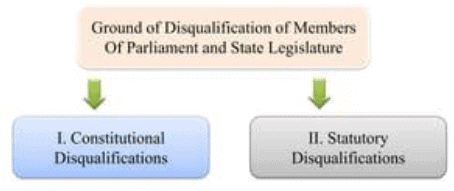
A Member of Parliament can be disqualified under the following circumstances:
- Office of Profit: If the member holds any office of profit under the central or state government.
- Unsound Mind: If a court declares the member to be of unsound mind.
- Insolvency: If the member is an insolvent or unable to pay their debts.
- Citizenship: If it is found that the member is not a citizen of India or has willingly acquired citizenship of any foreign state.
- Legal Disqualification: If the member is disqualified by a law made by Parliament.
Vacation of Seats
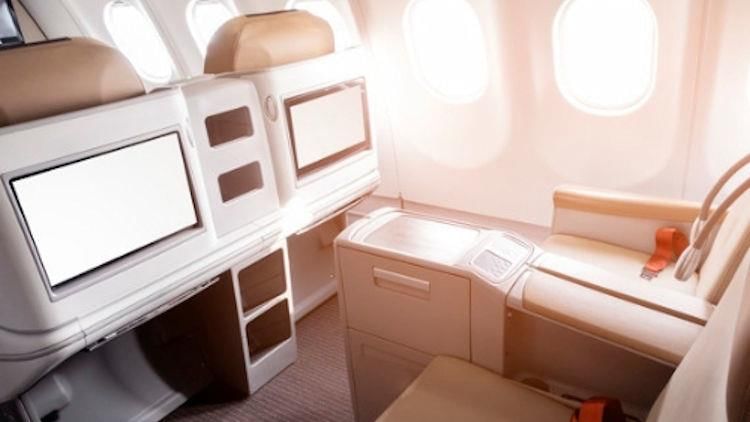
Seats in either the Lok Sabha or Rajya Sabha become vacant under the following circumstances:
- If a member of Parliament resigns from their seat.
- If a member is absent from the House continuously for 60 days.
- If a member of Parliament is elected to the State Legislature, they must vacate their seat in Parliament and vice versa.
Procedures in the Parliament
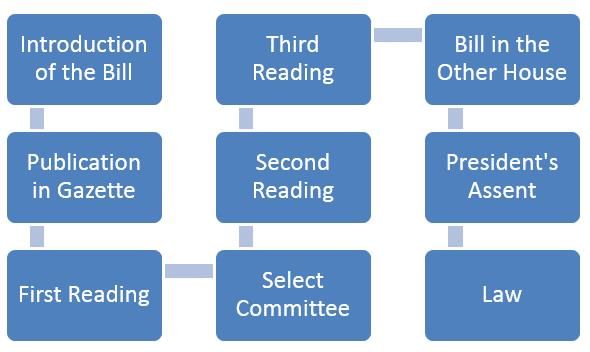
The Parliament follows certain procedures and has specific sessions throughout the year.
Sessions
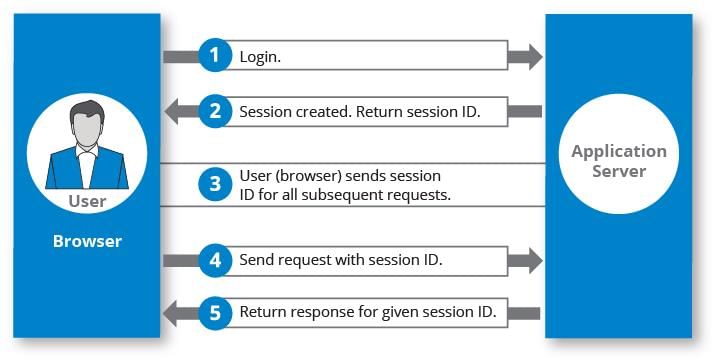
The President summons each House of Parliament, and each House must meet at least twice a year, with a gap of no less than six months between two consecutive sessions.
Typically, there are three sessions:
- The Budget Session
- The Monsoon Session
- The Winter Session
Quorum
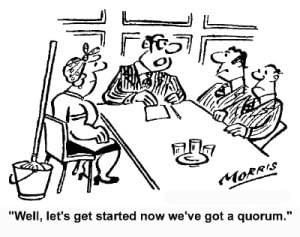
Quorum refers to the minimum number of members required to be present in the Lok Sabha and Rajya Sabha for a bill to be passed. If the necessary quorum is not met, the Speaker has the authority to adjourn the House until the required number of members is present.
Question Hour
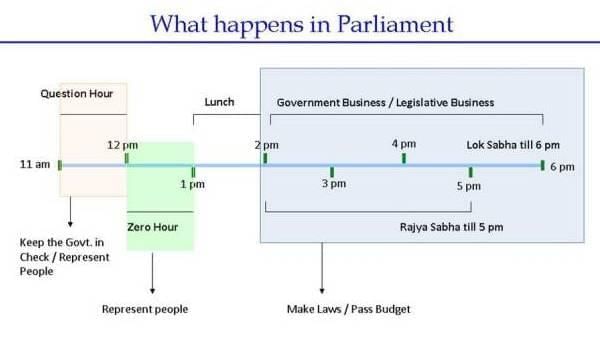
Question Hour is a designated time in Parliament when members have the right to ask questions to the government on matters of public interest. This practice is known as interpellation.
The first hour of each working day in Parliament is reserved for Question Hour.
There are three types of questions that can be asked during Question Hour:
a. Starred Questions: These are questions for which members
seek oral answers in Parliament.
b. Unstarred Questions: These questions require written answers.
c. Short Notice Questions: These questions are asked with less than ten days' notice. It is at the member's discretion to accept or reject short notice questions.
Types of Motions
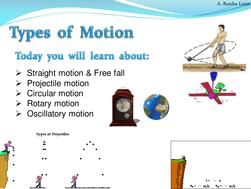
A motion is a way for a member of the House to suggest discussing an important public issue. By bringing in motions, members draw the government's attention to significant matters. Here are some important types of motions:
- Adjournment Motion
 The adjournment motion is an exceptional procedure that allows for the discussion of urgent public issues, setting aside the usual business of the House. Such motions are typically permitted for subjects like large-scale robbery, natural disasters, communal unrest, etc.
The adjournment motion is an exceptional procedure that allows for the discussion of urgent public issues, setting aside the usual business of the House. Such motions are typically permitted for subjects like large-scale robbery, natural disasters, communal unrest, etc. - No-Confidence Motion
A No-Confidence Motion is a proposal that indicates a lack of confidence in a Ministry. The Prime Minister and the Council of Ministers are collectively accountable to Parliament. If the opposition moves a No-Confidence Motion with the support of at least 50 members, it is first debated and then put to a vote. If the Lok Sabha passes the No-Confidence Motion, the government must resign. - Adjournment and Prorogation of the House
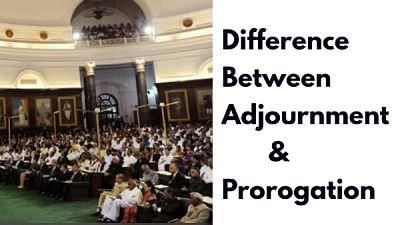
When the Government resigns following the passing of a No-Confidence Motion, the Prime Minister has the authority to recommend the dissolution of the House. The President can dissolve the House upon the Prime Minister's recommendation, provided there are no parties with a majority capable of forming a government.
The House may also be adjourned in instances such as the death of a sitting or former member, excessive disorder within the House, or the absence of a quorum.
Speaker of the Lok Sabha
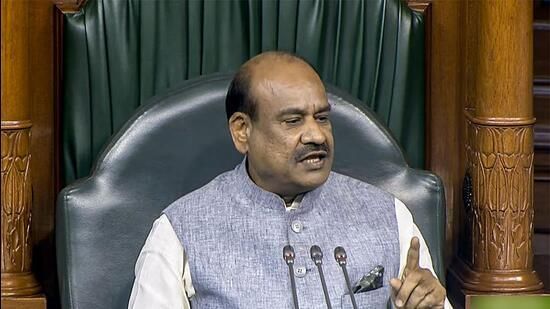
The Speaker of the Lok Sabha serves as the presiding officer of the House and is elected from among the Members of Parliament following general elections. Once elected, the Speaker is expected to act impartially, regardless of their political background. The term of the Speaker is five years. If the Speaker is absent or their position becomes vacant, a Deputy Speaker is responsible for overseeing the proceedings of the House.
Functions of the Speaker (related to conducting business of the House)
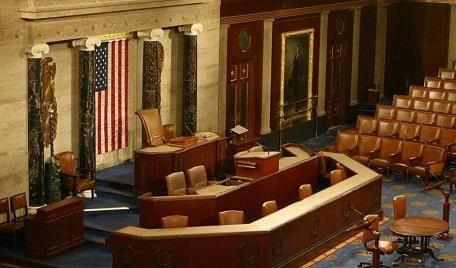
The Speaker is responsible for overseeing the business of the House and allocating time for discussions. Their decision on all parliamentary matters is final.
- All bills passed by the Lok Sabha must be signed by the Speaker.
- The Speaker puts issues to a vote and announces the results.
- The Speaker determines whether a bill is an ordinary bill or a money bill.
Administrative Functions
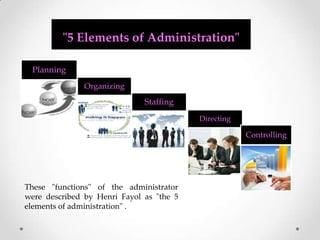
- The Speaker receives all petitions and documents submitted in the House.
- He communicates all decisions made in the House to the relevant authorities.
Disciplinary Functions
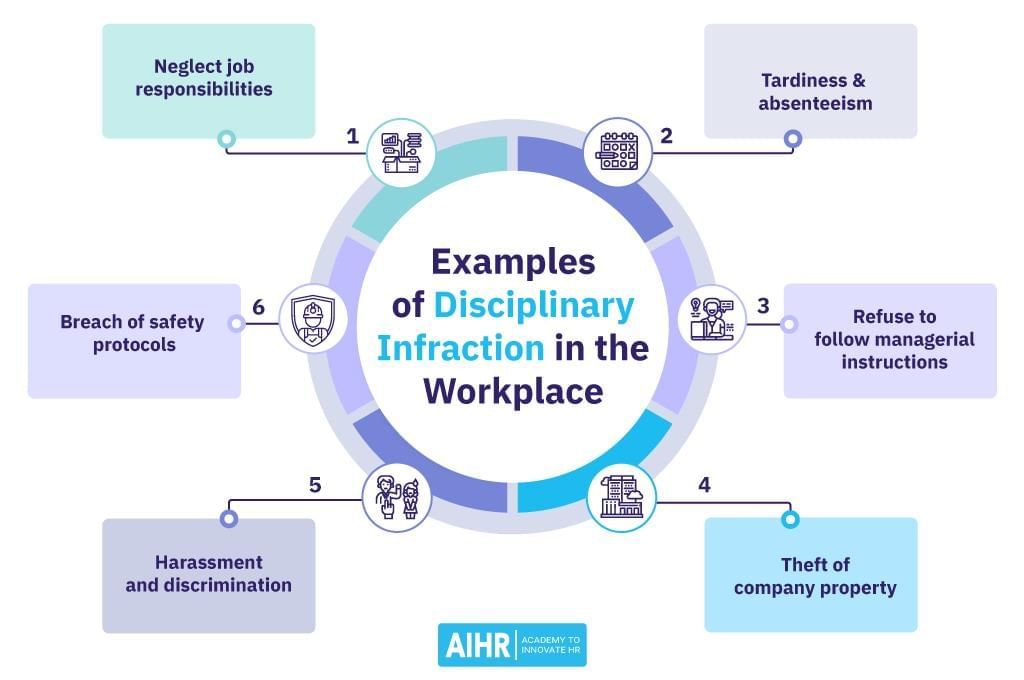
- The Speaker is responsible for maintaining order in the House. He has the authority to suspend a member or, in cases of serious disorder, to adjourn the House.
- If members use indecent language, the Speaker may issue a warning against such language in the future.
- The Speaker makes decisions regarding the disqualification of a member under the Anti-Defection Law, as per the Constitution. His decision in this regard is final.
Parliamentary Committees
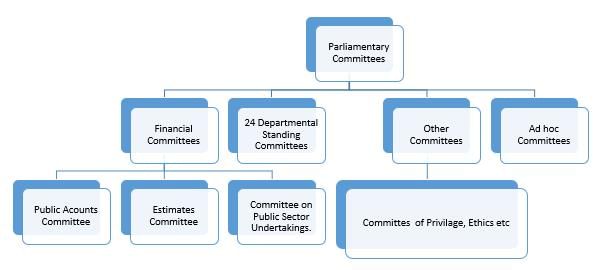
- The Speaker is in charge of certain committees, like the Business Advisory Committee and the Rules Committee.
- The Speaker also appoints the chairpersons of all committees in the House and provides them with directions.
Other Functions
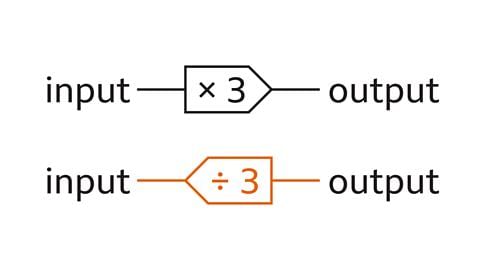
- The Speaker leads joint sessions of both Houses.
- He also oversees the Conference of Presiding Officers of Legislative Bodies in India.
Rajya Sabha
The Upper House of Parliament is called the Rajya Sabha, which represents the states of India.
Term
- The Rajya Sabha is a permanent body and cannot be dissolved. Members serve for six years, with one-third retiring every six years.
- The Rajya Sabha has 250 members. The President nominates 12 members who have made significant contributions to fields like education, sports, arts, sciences, and social service. The remaining 238 members are elected by State Legislative Assemblies, with seats allocated based on population.
Qualification
- Candidates must be Indian citizens and at least 30 years old.
Leadership
- The Vice President is the ex-officio Chairman of the Rajya Sabha, presiding over meetings and voting only in case of a tie.
- The Deputy Chairman, elected from among the members, performs the Chairman's duties in their absence.
Powers and Functions of the Lok Sabha and the Rajya Sabha
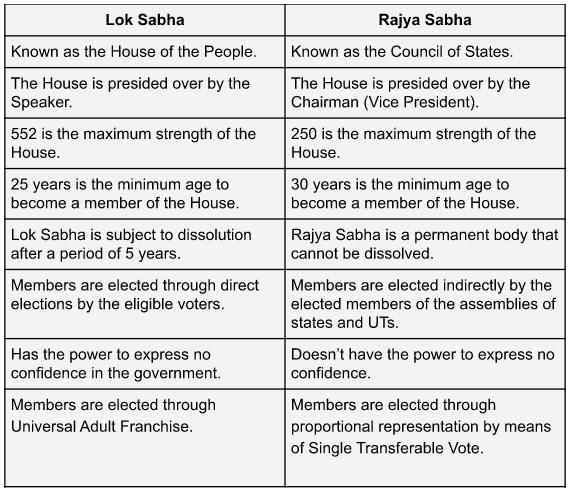
Legislative Powers
- The Lok Sabha and the Rajya Sabha have the authority to create laws on subjects listed in the Union List, which includes critical areas like foreign policy and defense.
- Both Houses can also legislate on matters in the Concurrent List. If there's a conflict with state laws, the Union laws prevail.
- They can make laws on subjects not specified in any of the three lists, known as residuary powers.
- During an emergency, the Parliament can legislate on subjects in the State List if the Rajya Sabha deems them nationally important and if two or more states request such legislation.
- The President can issue Ordinances when Parliament is not in session, but these expire after six weeks.
- In cases of constitutional breakdown in a state, Parliament can declare an emergency, acting as the state legislature and assuming significant powers.
Financial Powers
- All bills, except for Money Bills, can be introduced in either House of Parliament. Money Bills can only be introduced in the Lok Sabha, with the Rajya Sabha playing a advisory role in financial matters.
- The Parliament approves the Union budget, which outlines the government's income and expenditures for the financial year.
- If the budgeted amount for the financial year is insufficient, Parliament can request a Supplementary Grant.
- If the budget is not passed at the beginning of the financial year, the executive can withdraw funds from the Consolidated Fund until the budget is approved.
- The Parliament determines the salaries and allowances of Members of Parliament (MPs).
- No taxes can be imposed, and no money can be withdrawn by the government without Parliament's approval.
Control over the Executive
- Parliament exercises control over the Executive by posing questions to ministers during Question Hour. This allows members to draw attention to unjust government policies.
- Parliament can pass a No-Confidence motion against the government, forcing it to resign if the motion is passed.
- Adjournment motions can be used to address mishaps like railway accidents or riots, highlighting acts of omission and commission.
- Cut motions can be moved to reduce grant demands in the Lok Sabha, ensuring public money is spent according to Parliament's decisions.
Judicial Powers
- Parliament can impeach the President for grave misconduct or violation of the Constitution. If charges are approved by a two-thirds majority in both Houses, the President may be removed.
- Parliament can remove judges of the Supreme Court and High Courts, the Chief Election Commissioner, and the Comptroller and Auditor General of India for violating constitutional provisions.
- Parliament can punish individuals for obstructing or ridiculing its work.
Electoral Functions
- The Parliament, along with the State Legislatures, is responsible for electing the President of India.
- The Vice President of India is also elected by the Parliament.
- The Speaker of the Lok Sabha is elected by the members of the Lok Sabha, while the Deputy Chairman of the Rajya Sabha is elected by its members.
Amendment of the Constitution
- The Parliament has the authority to amend the Constitution.
- However, amendments must be passed by both Houses of Parliament with a two-thirds majority.
Other Powers
- The Parliament can change the name or boundaries of any state and can also create new states.
- It has the authority to make laws regarding the composition, jurisdiction, and powers of the Supreme Court.
Special Powers of the Rajya Sabha
- The Lok Sabha cannot make laws on subjects in the State List unless the Rajya Sabha passes a resolution by a two-thirds majority.
- If the Rajya Sabha requests the creation of new all-India services in the national interest, the Parliament may establish these services.
- During a national emergency, if the Lok Sabha is dissolved, the Rajya Sabha can assume the functions of the Lok Sabha.
Special Powers of the Lok Sabha
- The Lok Sabha has the exclusive authority to move and pass a Motion of No-Confidence. If this motion is passed, the Government is required to resign.
- Money bills can only be introduced in the Lok Sabha.
- In the event of a deadlock over an ordinary bill, the decision of the Lok Sabha prevails due to its numerical strength, which is double that of the Rajya Sabha.
Differences between the Lok Sabha and the Rajya Sabha
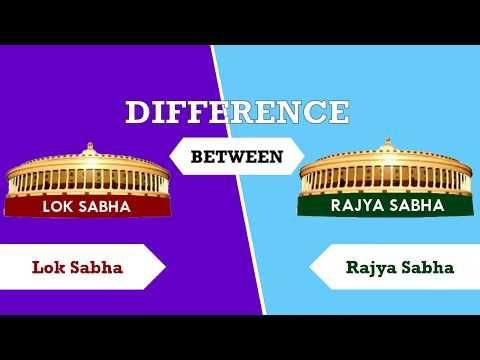
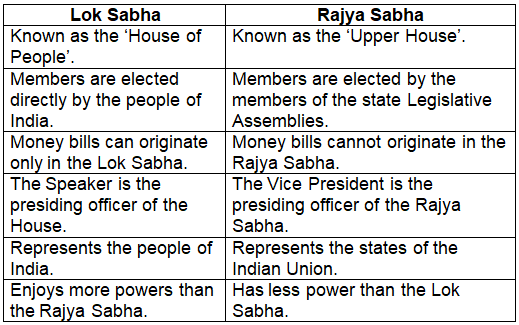
Anti-Defection Law
The Anti-Defection Law, enacted in 1985, allows for the disqualification of Members of Parliament and state legislators on grounds of defection. The grounds for disqualification include:
- Party Members: A parliamentarian who is a member of a political party can be disqualified if they resign from the party or vote against the party's directions.
- Nominated Members: A nominated Member of Parliament can be disqualified if they join a political party and vote against the party's directions.
- Independent Members: An independent Member of Parliament is disqualified if they join a political party after their election.
|
28 videos|103 docs|27 tests
|
FAQs on Revision Notes: The Union Legislature - History and Civics Class 10 ICSE
| 1. What is the structure and composition of the Lok Sabha in the Union Parliament? |  |
| 2. What are the qualifications required to become a member of the Parliament in India? |  |
| 3. What are the disqualifications that can prevent someone from becoming a member of Parliament? |  |
| 4. How are the seats in the Lok Sabha vacated, and what procedures are followed? |  |
| 5. What is the procedure for conducting sessions in the Parliament of India? |  |















